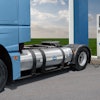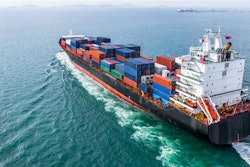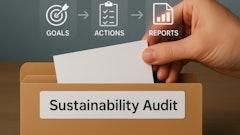
Across all industries, the pressure to increase operational sustainability is growing. National and supranational organizations are championing sustainability, and regulations are following suit, with the goal of accelerating the transition to greener practices. The European Union’s incoming Digital Product Passport (DPP), part of the European Green Deal and Circular Economy Action Plan, is a prime example of this, and can also help to combat greenwashing with verifiable data available throughout a product’s lifecycle.
The DPP will require key data points to be collected, stored and made easily accessible throughout a product’s lifecycle. Information stored will start with the product's origin, its composition, and manufacturing process and will be updated throughout the item’s lifecycle to improve traceability. This will help to inform decision-making about a product’s refurbishment, reuse and renting, and how to sustainably manage its “end-of-life.” High-impact industries such as batteries, textiles, and steel, will be the first to be DPP-mandated, with most of these products sold in the EU set to require a DPP by 2027-2028.
Aligning with the UN’s Sustainable Development Goals 11, 12 and 13 – Sustainable Cities and Communities, Climate Action and Responsible Consumption and Production, respectively – the DPP aims to enable more circular economies, reduce environmental impact and enhance traceability. Of course, none of this can be achieved without a “data carrier” to act as the connector between physical products and their accompanying digital DPP data.
Data Carriers as DPP Facilitators
For consumers and other businesses to access products’ vital DPP information, they will need to engage with a data carrier. These carriers will link physical products to their digital DPP information, with the company that puts the product on the market responsible for ensuring that this data is available throughout an item’s lifecycle. This creates irrefutable documentation of a product’s journey, helping to combat greenwashing with clear information on whether a company’s products are environmentally sound. Companies and consumers can use this information to trace items right from being manufactured, improve sorting and recycling, inform decisions about refurbishment, reuse and renting, and how to sustainably manage the product’s” end-of-life.”
So far, no specific technology has been mandated by the EU as a preferred data carrier and technologies being explored include QR codes and RAIN tags. At least initially, however, a flexible, multi-carrier approach will optimize the DPP’s effectiveness, as different carriers each have their own strengths across the value chain. Simultaneous use of RAIN tags and other data carriers will help to ensure comprehensive product tracking and critical end-of-life instructions for sorters and recyclers, as well as providing consumers with easy access to comprehensive product information through more familiar tech, like QR codes.
This approach will be especially useful while awaiting the market entry of RAIN-enabled mobile devices.
Understanding the Role of RAIN
RAIN is emerging as one of the cornerstone technologies for the DPP. RAIN tags can offer durable longevity, withstanding environmental stresses, heavy wear and tear, and harsh conditions. They can remain functional after exposure to extreme temperatures, 100-plus textile wash cycles, or years of use in tyres, delivering reliable tracking throughout a product’s lifecycle.
In this way, RAIN can deliver comprehensive product information from a tagged item’s manufacture to that item’s end-of-life. This data can be captured, read and used by businesses at every stage of the supply chain to optimise operations and drive more sustainable decision-making. Equipped with accurate, real-time RAIN-enabled data on stock levels, locations, and movements, for example, businesses can significantly reduce overproduction and excess inventory. This brings companies in line with new legislation, like the ban on destroying unsold goods in the Ecodesign for Sustainable Products Regulation and enables them to foster a more sustainable production and consumption model.
As items reach the end of their lives, RAIN technology can also help with large-scale circular economy initiatives such as recycling, reuse, and resale. With distance and mass-reading capabilities, companies can increase efficiency and accuracy in sorting processes, making the process easier and more economical. For example, in textile and tyre recycling, RAIN tags enable automated identification and sorting by sharing details like brand, size, and material composition.
After sorting items, the detailed information stored on a RAIN tag can then be used to organise either the resale or recycling of materials at the end of a product’s life. This capability supports automated processes that are key to a functional circular economy, ensuring materials are reused and repurposed effectively.
Enabling true circularity
As EU legislators continue developing the DPP framework, creating an agile, market-driven system is critical to enable true circularity. A multi-technology approach that uses systems equipped to maximise benefits will be the key to success, ensuring flexibility for the DPP to also evolve in line with emerging business models, markets, and innovations. Finding and implementing the best-positioned data carrier solutions is also fundamental to support the EU’s goal of unlocking a circular economy at scale and to ensure the successful implementation of the DPP framework.


















